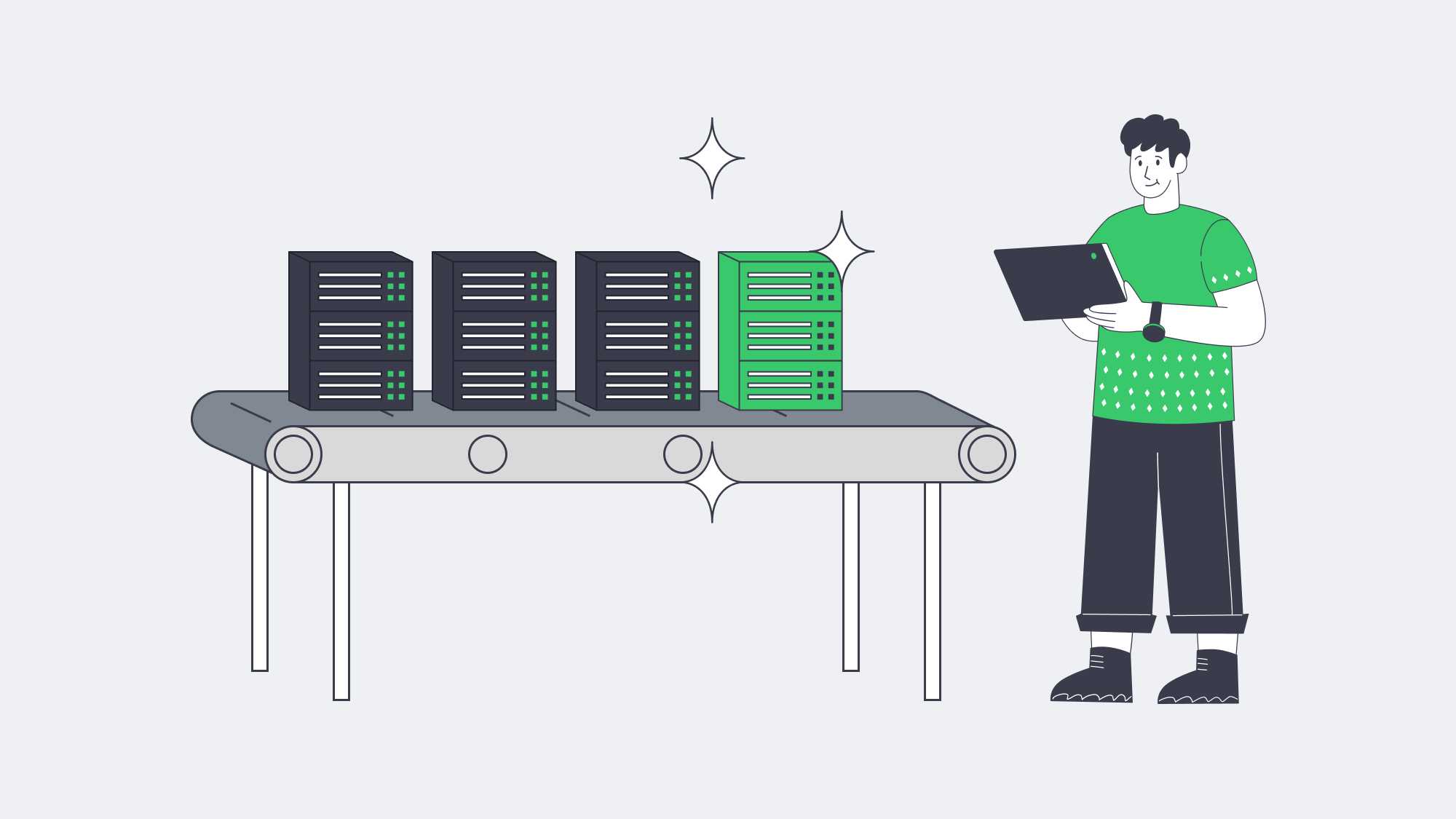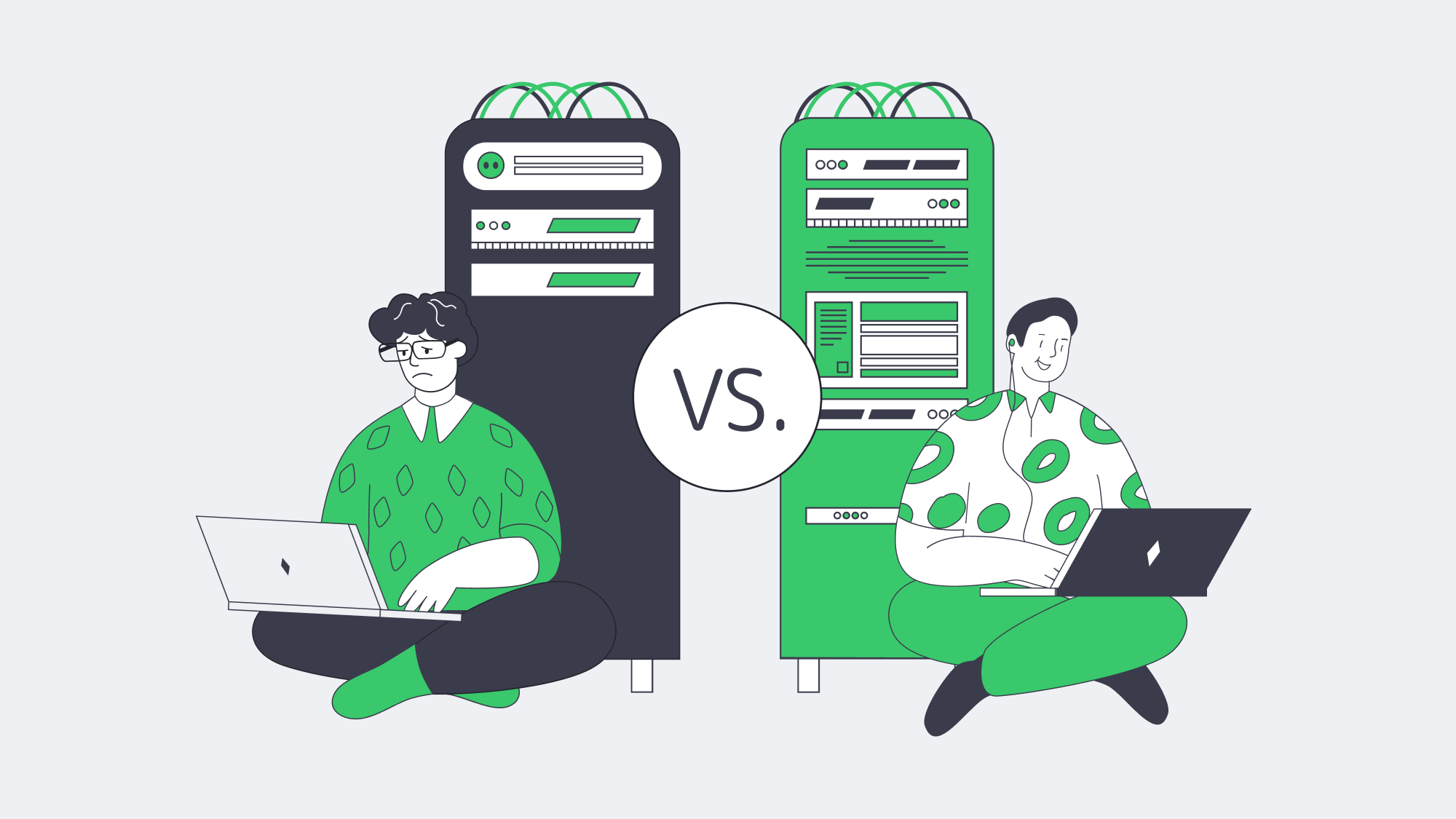Blog

Database Server Acquisition: Should You Buy or Rent?
Before modern innovations came along, the default was to buy a database server, bolt it into your rack, and run it into depreciation. This, of course, made scaling economically challenging, and as the world has become increasingly more digitally demanding, the pressure to scale is tremendous. Now, the traditional reflex to buy and bolt in has been shattered, but many still remain on the fence as to whether to buy or rent.
So, in an effort to clarify doubts and help with your decision, we have written a digestible data-driven guide. Let’s look at the capital-expense (CapEx) path of owning hardware and compare it with the operating-expense (OpEx) model of renting dedicated or cloud-hosted nodes. With the cost exposure, refresh cycles, burst capacity, and operational overheads laid out alongside legacy in-house server rack models, it soon becomes clear why they are no longer the standard for modern operations.
Choose Melbicom— 1,000+ ready-to-go servers — 20 global Tier IV & III data centers — 50+ PoP CDN across 6 continents |
The True Cost of Buying a Database Server
How much is a database server? The price goes beyond sticker price. The price tag is merely an opening bid, but let’s begin with a rough idea of initial outlay. A budget of $4,000–$8,000 will get you a modest 2-socket machine with 256 GB RAM and mirrored NVMe. Somewhere in the region of $15,000 and upwards is needed for an enterprise-grade build with high-core-count CPUs, terabytes of RAM, and PCIe Gen4 storage.
The kicker comes when you have to factor in warranties, sufficient power and cooling, and an annual service contract. There is also rack space to consider and spares. Realistically, you are looking at a three-year TCO of $54,000 for a single mid-range box ($1,500 monthly) according to industry analysts.
Rather than parting with a huge lump sum, you can rent for metered costs; comparable rented database server plans will set you back approximately $500–$650 a month with a one-year term. Granted, public-cloud analogs cost more per core-hour, but they scale down to zero. When analyzed over a three-year period, the cash converges, yet with OpEx you can exit, downgrade, and relocate without writing off any stranded capital. With these economic benefits, it is unsurprising that in 2022, upwards of 60 % of enterprises began accelerating the shift in IT spending from CapEx to OpEx through service contracts.
The nuances in accounting can make all the difference in operating efficiently without wasted expenses. Procurement committees, asset-tracking, and depreciation schedules are triggered by CapEx assets. OpEx flows better with operating budgets streamlined, cash flow smoothed, and approval loops reduced. That way, spending is truly aligned with genuine business demands.
The Economics At A Glance
| Dimension | Buy Once (CapEx) | Rent or Cloud (OpEx) |
|---|---|---|
| Up-front outlay | High (hardware, setup) | Low (first month) |
| Balance-sheet impact | Capital asset, depreciation | Operating expense |
| Flexibility | Locked to spec & location | Scale up/down per hour |
| Refresh cycle | 3–5 years, manual | Continuous, provider-driven |
Refresh Cycles: Avoiding the Inevitable Treadmill

Server silicon doesn’t age well, CPU road-maps peg ~20 % performance-per-watt annually, and there is an unavoidable plunge each generation with NVMe latency as well. Despite the fact, a 2024 Uptime Institute survey divulged that 57 % of operators now keep hardware for five years or more, which is twice the share revealed in a similar survey in 2016. Downtime risks increase with every additional year, modern software features are limited, and you are essentially burning kilowatts at last-gen efficiency.
That treadmill can be avoided altogether with the decision to rent. Server hosts regularly refresh inventories, and at Melbicom, we can migrate tenants to fresher nodes with very little friction. Want to accelerate SQL Server compression with AVX-512? Melbicom shoulders disposal burdens and facilitates replacement logistics, allowing you to clone, test, switch over, and retire the old iron without the remorse of sunk costs.
Traditional models centered on legacy in-house data centers complicate the process. Freight delays are almost inevitable when making your new hardware order, cabling diagrams can be complex, and sometimes the upgrade requires building-wide power upgrades to boot. When hosts such as Melbicom can place a freshly imaged server, fully racked in a Tier IV or Tier III hall in around two hours, why go through such a headache?
Workload Utilization and Burst Capacity
Typically, the utilization of a database server stored on the premises is low. Industry studies place average use at somewhere between 12–18 %, but we buy for peak and idle for months. The average utilization of hyperscale clouds is ~65 % due to multiplexing demand, and dedicated hosts approach that figure because the hardware is almost never idle.
Idle capital can be converted by OpEx into measured consumption, taking care of surges. For example, if a gaming launch pushes reads per second tenfold, replicas or higher-IOPS nodes materialize as needed, disappearing from the bill once the surge ends. With 1,000+ ready configurations across 20 global markets (LA to Singapore, Amsterdam to Mumbai) stocked and ready to go, Melbicom can ensure capacity bursts land nearby with sub-10 ms latency. You can say goodbye to network bottlenecks as the bandwidth envelope reaches 200 Gbps per server, and the pace of modern OLTP demands is met with NVMe arrays.
Surges aside, sizing challenges are still faced by those with steady workloads. Oversizing your infrastructure worsens utilization and total cost of ownership, as underused capacity ties up capital without delivering proportional value. By renting your hardware capacity, you have a bidirectional safety valve, allowing you to scale both up and down as needed.
Understanding Operational Overheads: Who Does the Heavy Lifting?

Owning the hardware outright also brings additional operational overhead to maintain the infrastructure. Firmware needs patching, and backups need switching. Someone has to guard loading docks against humidity and human error. Having someone on hand to swap drives at 3 a.m. is integral to keeping things operational. IBM reckons that sysadmins spend roughly a third of their week caring for infrastructure, and this is often undifferentiated. By renting through Melbicom, operational hardware maintenance is passive, and the overheads are included in your monthly rate, so you can sleep at night knowing there are no nasty bills for a new fan tray headed to your email.
Auditors also prefer dedicated hosts for regulated workloads, helping you meet compliance standards because it ensures encryption keys are in your sole hands. Renting a server in a certified environment offloads documentation whilst preserving isolation.
The Subscription Mindset Continues to Follow Trend Predictions
An arc was traced a decade ago, and infrastructural spending tracks it to a T. Service-based IT is up from where it was pegged in 2022 (at 41%) and has been forecast by Gartner to surpass half of enterprise outlays mid-decade. Morgan Stanley data backed that prediction from the alternate perspective, showing that the share of workloads running on company-owned hardware fell to roughly one-third by 2022/23. The subscription mindset is clearly taking hold, and the gravitational pull is unmistakable.
Hybrid deployment makes for a great landing zone. Dedicated rentals with predictable costs are ideal for steady, latency-sensitive transactional databases, while analytics bursts, dev/test, and edge caches that spin up and down as economics dictate are better suited to cloud infrastructure. This shift aligns with licensing needs, such as subscription-based Microsoft SQL Server.
As subscription becomes the new normal, lease terms crucially become measured in months, rather than years. Letting clients adopt ARM CPUs when they cross the performance-per-watt tipping point or relocate data also satisfies sovereignty laws that are becoming more complex; on-prem servers simply can’t keep up, as they are often frozen in purchase orders, unable to pivot.
Striking a Balance
CapEx still has an edge in niche cases—such as ultra-stable OLTP clusters housed in campuses with surplus power, or where regulators require certain workloads to run in owned, physically secured cages—but overall, the burden of proof has flipped; justifying ownership is harder with a backdrop of flexible, cancel-any-time services that refresh hardware without extra cost.
That’s where OpEx engines shine; sunk-cost anxiety is eliminated, and teams can therefore pour energy into schema design, query tuning, and generating insight. A cost/performance sweet spot can be easily struck by exploiting PCIe Gen5 storage or emergent CPU instructions, and eliminating weekend hardware swaps prevents any dips in morale.
Conclusion: Agility Over Ownership

If you operate with a data-driven strategy, the last thing you want is to have it undermined by the infrastructure. For workloads that arrive faster than procurement cycles, renting dedicated servers or cloud nodes is the surest way to prevent your infrastructure from becoming a depreciated asset.
Whether you are running PostgreSQL, Oracle, or buying Microsoft SQL Server licenses, you want modern solutions that scale with ease and can be refreshed and relocated as fast as the market moves.
Ready to Deploy Your Database Server?
Choose from 1,000+ high-performance dedicated configurations and have your database server online in hours.